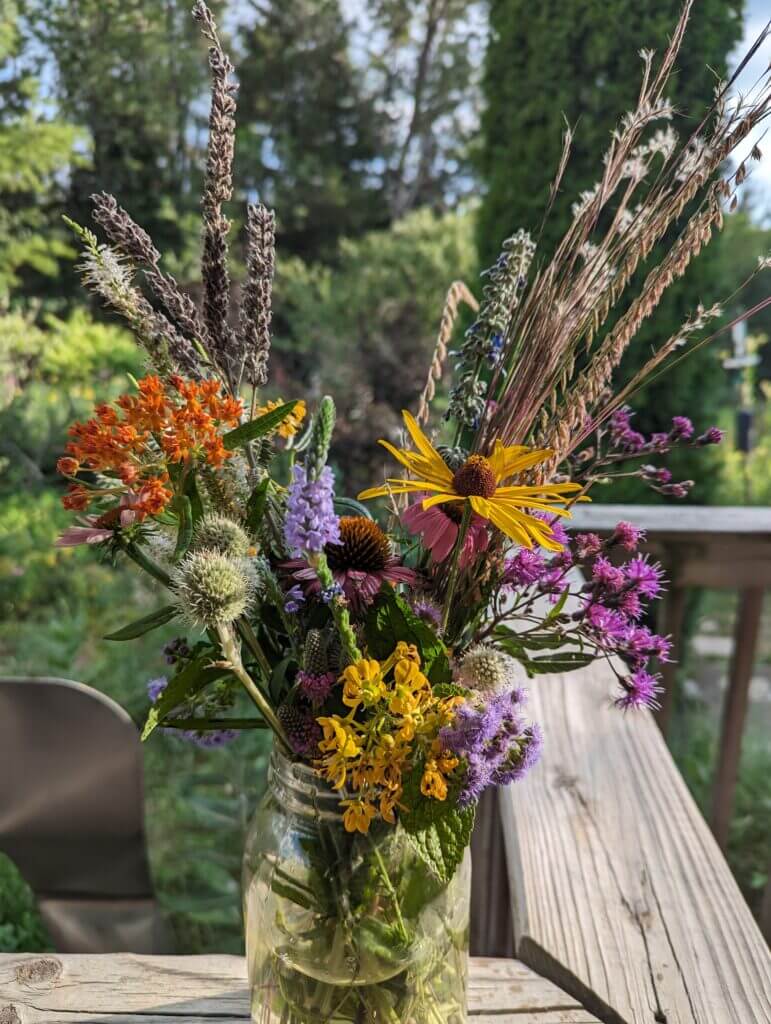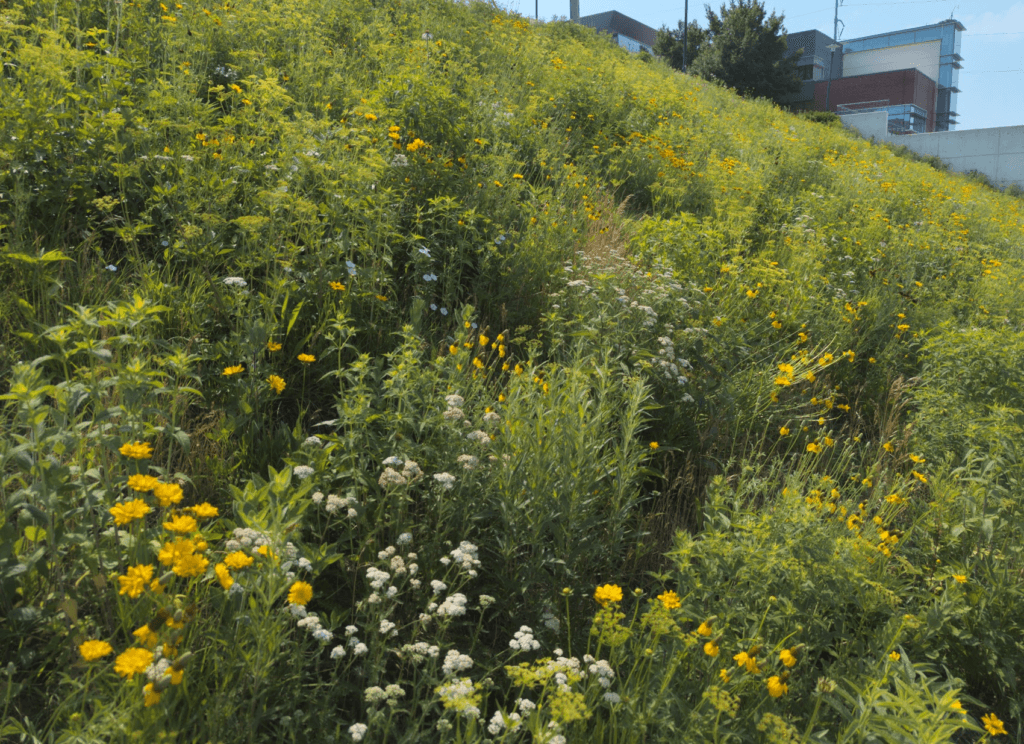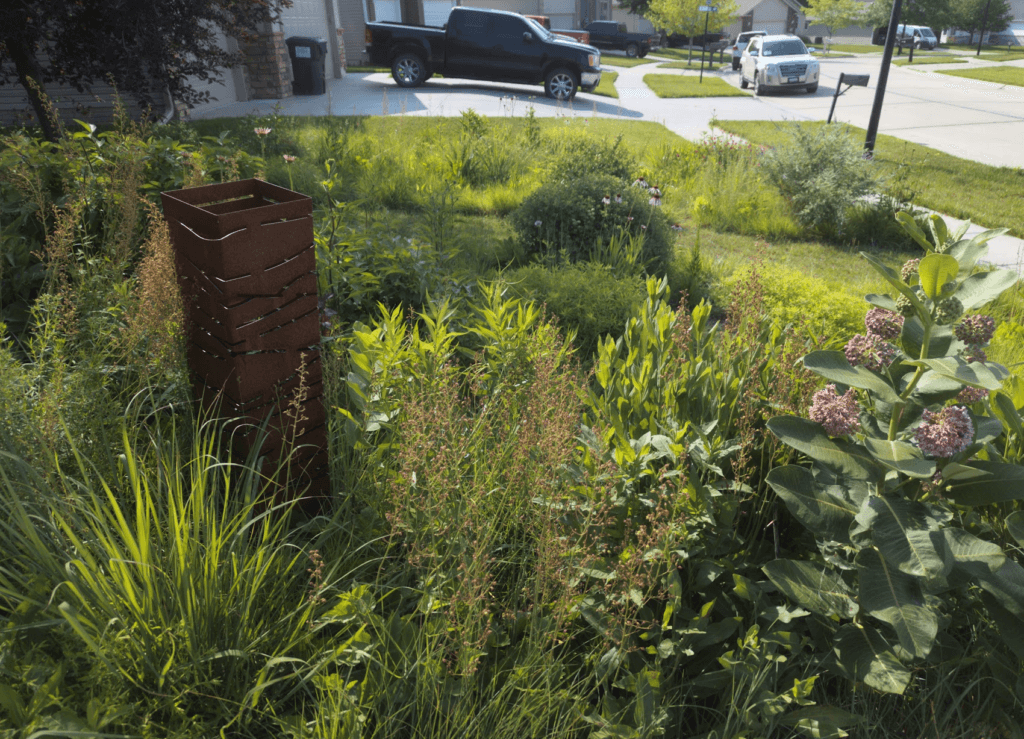We’re used to selecting plants for our gardens based on the information of a plant tag at the nursery. And that’s a very small amount of real estate to convey all the aspects that we really ought to know. And what are those aspects of each plant, knowing that these aren’t always hard and fast rules because plants can be adaptable in the right conditions? Here’s a partial list:
Whoa, what were those last two or three? Why do they matter? Actually, they probably matter the most. We can’t just choose a plant based on the flower it displays on a table at the nursery or a few dozen words on a small tag that gets harder and harder to read the older we get. If our goal is to create a resilient, low-management landscape, we have got to know the plants a bit better. Ultimately, that knowing comes through trowel and error, or, letting the plants teach us over time and being humble through it all. For many novices, the failure of one plant can sometimes mean the failure of the entire garden endeavor, and the belief they have a brown thumb. It doesn’t have to be like that.

If you’re focused on using as many native plants as you can, then it’s time to ignore USDA hardiness zones. Zone 8 in the southeast is not the same as zone 8 in the Pacific northwest. And that’s why researching plants based, at the very least, on zipcode, and then ecoregion, is important if our goal is reviving and sustaining local wildlife populations – especially insects, bugs, birds, etc. Using plants indigenous to your ecoregion will give at least wildlife the best chance to adapt to a changing climate, because they are still very much among us — even in highly-altered, novel ecosystems that we see in urban areas.
Learning about your ecoregion is learning about your region, your homeplace, the soils and waters and geology and ecosystems that still border the edges of our sprawl and colonization. For fauna that can easily move good distances, pockets of refuge and habitat corridors provide a lifeline, including the ability to breed with new populations and, hopefully, help species select for more climate resilience and adaptability to the pressures of novel and eroded ecosystems. But this is really just the tip of the iceberg.
As we continue to speed up the rate and instability of climate disruption, other ways to gauge the best plants for a given area may come into play. For example, heating and cooling degree days, or a new proposal, outdoor days. Since we seem reticent to tackle climate change head on, and all the powerful systems that will require reworking, gardeners will have to find ways to create adaptable landscapes in ways we’ve never had to do before. That adaptability and resilience begins with more intentional plant selection based on factors beyond just aesthetics or simple parameters such as height, sunlight, and bloom time.

In a perfect world sociability ranking would be one of the main methods we use to select plants for our garden beds and landscapes. You won’t find this ranking system in most any book or website, and certainly not on a plant tag, but it’s about as critical to know as whether you have a plant or a rock you’re buying. The sociability ranking or rating system gives a 1-4 score based on how much the plant spreads or reproduces (by seed, roots, or both). Now, that ability can be tempered or accelerated based on environmental factors such as soil type, available moisture, light, and the other plants within the community. Here’s how that ranking system goes:
These are not hard and fast rankings, and there’s far more nuance to them – which is why we offer an in-depth online class on how to research plants, classify them, and use them to create a climate-resilient, low management, and dynamic landscape. Knowing where a plant fits on the ranking scale not only shows you where or if it belongs in your landscape, but how to use it: in masses, in drifts, singly, and in what layer.

Ultimately, what you need to know is how and where to research plants – a starter list of resources which we’ve provided here – and then start organizing plants you think might be suited to your site conditions and management goals (a good place to see a plant research journey in action is right here). Generally, the smaller the space the lower on the sociability ranking you may want your plants. If you have a large space and are on a budget and so need plants that make free plants, or are trying to hold back invasives or slow erosion, use species higher on the sociability ranking (levels 3 and 4). When in doubt, plant like with like — 1s and 2s together, and 3s and 4s together.
How does sociability influence management? It’s all about choosing the right plant for the right place; you don’t want to select a self-sowing behemoth for a small space, otherwise, you’ll never stop pulling seedlings then possibly grow so frustrated you stop having a garden at all.
As you can imagine, there’s more to learn. There are times you want to mix sociability, depending on the other performance factors of a plant species. But this is where to begin – thinking about how plants move and reproduce, the timescale of that movement, and the plant communities they will work within no matter the weather or climate pressures that may arise. Just remember, it’s still a garden. You will always be tweaking – and learning from the plants. That’s what management is all about, letting the plants guide you to new information, new designs, and new possibilities. Over time, the work will be less intensive and instead more immersive.
If you’re ready to go deeper try the online class “Using Plant Sociability in Design.”

